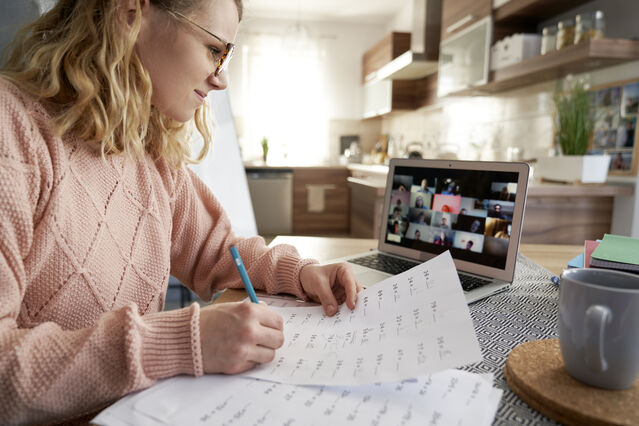Education
What Have We Learned About Remote Learning?
Distance learning can be improved with shorter classes, live teachers, and more.
Posted January 24, 2022 Reviewed by Jessica Schrader
Key points
- Short lectures and videos can keep students more engaged in remote learning.
- Students often will not benefit from having too much free time.
- Effective remote learning involves live lessons and interactive teachers.
Remote learning has been criticized as a boring, impersonal, and inadequate substitute for the classroom. And the data suggests that most students, especially those from disadvantaged families or with preexisting learning issues, are falling further behind their peers than they would in a traditional school setting. While fewer kids are engaged in remote learning during the 2021/2022 school year, it has become the norm for many families for the foreseeable future. Many kids and parents are reporting that they like distance learning—sometimes because there’s less work and it’s easier, but there are other reasons as well.
As a child clinical neuropsychologist, I’ve interviewed more than 50 students with attention, learning, and social-emotional difficulties about their experiences with remote learning during the pandemic. These interviews provided an anecdotal glimpse into strategies that worked and those that contributed to some of the dismal results in the spring of 2020.
What has helped kids learn:
- Short lectures centered around a topic of interest, with relevant follow-up assignments.
- Fifth-grader Janice reported that, “School wasn’t too bad. It was easier. Classes weren’t too long. I liked the 15-minute breaks. Sometimes I stayed after class and talked with my friends."
- Zachary, a college sophomore, reported having “good classes and bad classes.” Good classes had “10-15-minute in-depth video lectures with a follow-up activity”; bad classes had “lengthy lectures and no contact with the professor."
Opportunities to move around and spend less time getting ready:
- Gabbie, a fourth-grader, reported that “the best thing is that I really only have to get changed on the top half of my body, and the worst thing is that my teacher really hasn’t been able to help me. She barely answers my questions or my mom’s emails."
- Although second-grader Jamie observed that it was hard for him to get started on his work, he added that he could “stand up, move around, be active, and then get more work completed.” In accordance with his IEP, he also had one-on-one teaching for reading and writing.
Obstacles to learning:
- Lack of live teachers to monitor work, help with comprehension, and overcome frustration.
- For second-grader Liliana, remote learning magnified the significant difficulties she was already having in school. Her mother reported that when fully engaged with remote learning, she did well. But once she got frustrated, her teacher could not help her reengage as she might've been able to do in the classroom.
- Alexa, a ninth-grader with a school day that generally ran from 8 a.m. to 11:30 a.m., reported that remote school “hasn't been great because it's hard to concentrate when you have so much free time and no one is monitoring you."
- Cyrus, a seventh-grader, said he “did not learn much and learned nothing new.” He reported that instructions for his online work were unclear, and he couldn't get directions from his teachers.
Lack of daily structure and expectations:
- Griffin, who recently finished high school, recognized that he tended to work better with the structure in his boarding school, where there was sports time, dinner time, and structured study time. He reported “getting extra assignments with distance learning because of shorter classes and teachers making up for missed classroom time."
- Peter, a college junior, reported that distance learning didn't work very well for him. None of his professors required him to be in class. Instead, they put up prerecorded lectures. He felt very unmotivated and put off schoolwork because he could do it anytime. He described himself as being “lazy and sitting around the house all day,” which made him feel “more tired."

Clearly, most of these students missed their live, interactive, engaged teachers. The structure of school—no matter how difficult it is to wake up and get to school on time—appears to provide expectations that work for most students. Kids who want to learn valued live, synchronous feedback and preferred smaller classes with teachers actively engaged in the subject matter. Many of the students valued shorter lectures with engaging information followed up by further exploration: an approach well-suited for short attention spans and readers of social media and blog posts. Understanding directions and assignments that are meaningfully connected to instruction were also valued.
Engaging models and strategies for online teaching can be found in homeschooling programs such as Outschool, where small group, interactive classes are the norm, and Edutopia, where technology and education have been a longstanding pairing.
Given the likelihood of distance education continuing for the foreseeable future, let’s hope that teachers can hear these students and make the next iteration of online learning into an opportunity for engaged learning.


